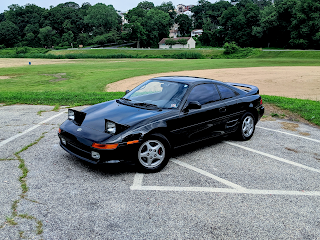Sometimes The Math Doesn’t Add Up. And Sometimes, It Does
 |
| It just don't add up! |
In contrast, real world math is meant to add up, but doesn't always, and when it does, it's kinda', sorta', maybe. Federal Reserve Chair Jerome Powell said as much (see time index 46:45) while at the Cato Institute to discuss inflation and monetary policy:
"Economics is not physics. There isn’t any specific temperature in which the economy boils over... and when that happens it takes many years of analysis, discussion, and debate to reach general agreement on why that's happened."
BUT... in outer space, the math truly added up, and in spectacular fashion. NASA's DART mission, a test to deflect an asteroid via kinetic impact, was neatly summed up by comedian Stephen Colbert:
"Essentially, they hit a bullet with a smaller bullet that they shot ten months ago."
And beyond outer space? There is a rarified realm where the math adds up exotically, and that is in the imagination... and not just anyone's imagination, but those belonging to Fields Medal and IMU Award recipients.
Last week, a batch of Nobel Prizes were awarded for 2022, and a summary can be found in the New York Times. Missing from that list is the field of mathematics. One of the tenets of the Nobel Foundation is to recognize fields that readily benefit humanity, and It's generally accepted that Alfred Nobel considered mathematics too theoretical to have such an impact. Mathematicians, however, have won the Nobel Prize in other disciplines, namely physics, economics, and surprisingly (to me), one for literature (Bertrand Russell 1950).
Regardless, the Fields Medal and IMU Awards make up for this Nobel neglect, and the winners are nicely presented in a series of short videos by The Simons Foundation. Philip Yam, my brother, is the producer. Each video runs about six minutes and I find them simultaneously soothing and stimulating as the professors talk about their work, their family, and what inspires them. Below is my summary, including quotes that stood out for me.
Hugo Duminil-Copin - probabilistic theory of phase transitions in statistical analysis. On the joy of family and how it changed him as a mathematician:
I had less time [for math], but it was better time.
June Huh - abstract spaces built from combinatorial objects which led to the proof of the Dowling-Wilson conjecture for geometric lattices. Math is a spiritual and philosophical pursuit:
The boundary between knowing and not knowing is so clear in mathematics.
James Maynard - number theory, in particular the location and spacing of prime numbers and the approximation of real numbers with fractions. Seeking structure, but hoping to learn to relax:
I find myself visually always trying to find order within an otherwise chaotic object.
Maryna Viazovska - lattice packing that provides the densest arrangement of identical spheres in eight dimensions while also solving certain problems in Fourier analysis. Fleeing the war in Ukraine, and losing a brilliant student to it, she nevertheless has hope:
What we are doing, of course, it's shaping the future. Maybe it will be used, I don't know, a hundred years from now. But it's still important.
I'll end with the Chern Medal winner Barry Mazur (there are more videos on the Simons Foundation page), if not for his deep discoveries in topology, arithmetic geometry, and number theory, and if not for the production quality and story telling of the video, then perhaps for bringing us back to mice and cheese.
Quoting one of his teachers:
"We're all little mice nibbling on the infinite cheese of knowledge."
Elaborating:
We're never going to consume the cheese, but it's the love of doing it together and how it shapes us that's important.



Comments